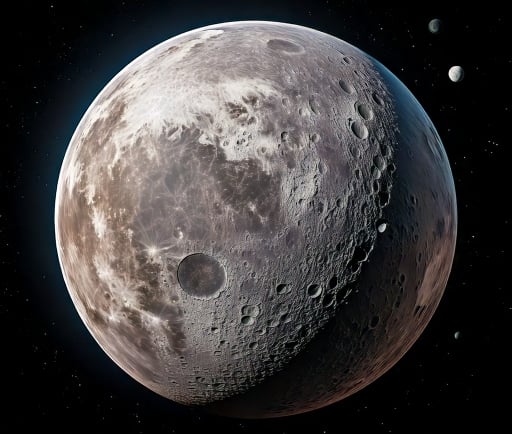Exploring the Icy Mountains of Pluto


Introduction to Pluto's Unique Landscape
Pluto, once considered the ninth planet in our solar system, is now classified as a dwarf planet. Since the New Horizons mission in 2015, our understanding of this distant world has expanded dramatically. Among its most fascinating features are the icy mountains that adorn its surface, which have been the subject of much research and intrigue.
Characteristics of Pluto's Icy Mountains
The icy mountains of Pluto are primarily composed of nitrogen ice, with significant amounts of water ice present as well. These peaks, some soaring to heights of over 3,500 meters, resemble the towering mountains found on Earth, yet they are sculpted by different processes. The low temperatures, which can plummet to approximately -375 degrees Fahrenheit, create a solid landscape that is both intriguing and hostile.
These mountains are geologically young, which suggests that they have formed relatively recently on a cosmic timescale. The smooth, flowing shapes indicate that they are possibly the result of tectonic activity, as well as the slow flow of ice beneath the surface. The observations suggest an active geology, indicating that Pluto may still be changing and evolving in ways we are yet to fully understand.
The Importance of Studying Icy Mountains on Pluto
Studying the icy mountains of Pluto is crucial for several reasons. Firstly, they provide insights into the geological history of the dwarf planet, offering clues about the processes that shape celestial bodies in the outer solar system. Understanding these processes helps scientists draw comparisons between Pluto and larger planets, enabling a better understanding of planetary formation and evolution.
Moreover, these icy mountains also hold implications for the search for extraterrestrial life. The presence of nitrogen and other volatile compounds raises the possibility of subsurface oceans that could harbor life. If Pluto’s environment can support some form of biological activity, it broadens the scope of astrobiological research and challenges our perceptions of where life might emerge in the universe.
In conclusion, the icy mountains of Pluto are not just striking features of its landscape; they are a treasure trove of scientific information that helps us understand not only Pluto but also the broader cosmos. Continued research and exploration will undoubtedly reveal more secrets of this distant world and its remarkable geology.
